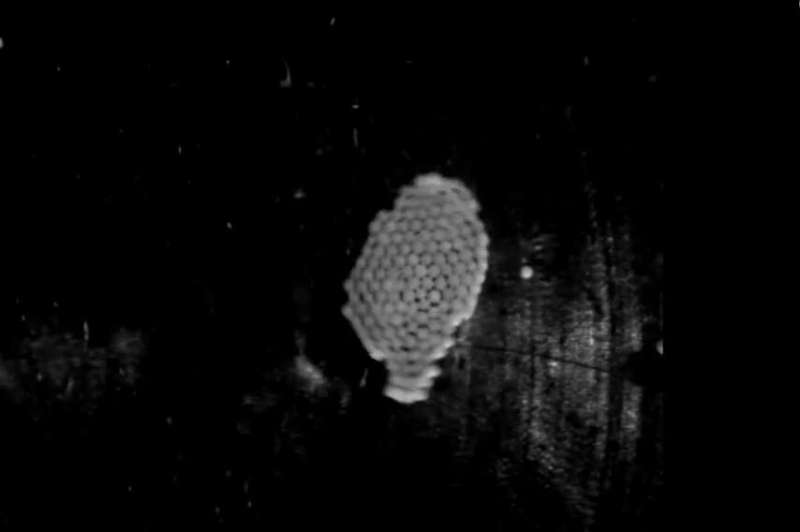May 2, 2022 report
Using sound waves to model the rotational dynamics of inertial many-particle clustering objects

A team of researchers working at the University of Chicago has found a way to use sound waves to model a system for rotational dynamics of inertial many-particle clustering. In their paper published in the journal Physical Review Letters, the group describes the model they created and possible uses for it.
Due to the difficulty of studying distant bodies such as exoplanets and black holes, astrophysicists attempt to create models for study instead. In this new effort, the researchers have created a physical model to study the rotational dynamics involved in objects made of many smaller objects as they spin at different speeds.
The model consisted of an audio speaker inside of a transparent box and millimeter-sized plastic balls. By pushing the speaker to emit standing sound waves, the researchers were able to levitate the plastic balls at a fixed height. Next, they took advantage of features of the sound waves they generated to create a weak attraction between the plastic balls as they levitated above the speaker. This pulled them toward one another until they joined to form a 2D round object similar to a dinner plate. Then, by adjusting the frequency of the sound, they were able to spin the object they had created. By further adjusting the parameters of the speaker, they were able to control how fast their plate of balls spun.
The researchers filmed the action as they increased the speed of their spinning plate. The plate changed from a round shape to one that was more oval. As the spinning speed increased, the plate began to come apart, flinging balls into the near distance. And then, surprisingly, the flung balls slowly reunited, forming a new plate.
The researchers noted that the spinning plate behaved differently than spinning liquid—its effective surface tension increased for larger-sized clumps of balls—an effect, they noted, that would be similar to a cup of water having a different surface tension than a bucket of water. They suggest further study is required to explain the difference. They also note their model could be used to study the action of other systems, such as rocky asteroids, as they grow larger.
More information:
Melody X. Lim et al, Mechanical Properties of Acoustically Levitated Granular Rafts, Physical Review X (2022). DOI: 10.1103/PhysRevX.12.021017
On arXiv: arxiv.org/abs/2106.09765
Journal information: arXiv , Physical Review Letters , Physical Review X
© 2022 Science X Network





















